
views
- Exfoliate your neck 1-2 times a week to improve your skin's texture.
- Apply skincare products with ingredients like vitamin C, retinol, and peptides to plump the skin and boost collagen production.
- For faster results, see a licensed dermatologist for laser resurfacing, microneedling, or Botox injections.
- Prevent neck lines from forming by applying broad-spectrum sunscreen with SPF 30 daily and moisturizing your skin in the morning and at night.
What causes neck lines?

Aging Horizontal lines on the neck area are a normal part of the aging process as skin begins to lose elasticity. Over time, our skin also retains less moisture and natural oil production diminishes. Wrinkles and creases tend to look more pronounced when skin is dry.

Sun exposure The UV rays in sunlight are extremely damaging to our skin. Areas like the neck get a lot of sun exposure, and the resulting skin damage speeds up the aging process, causing premature lines, creases, and wrinkles.

Repetitive skin creasing While people of all ages have horizontal neck lines, they're becoming much more common in younger people. "Tech neck" is the result of tilting our heads down to look at our devices constantly. This creases the neck skin repeatedly and eventually causes lines to develop.
At-Home Treatments
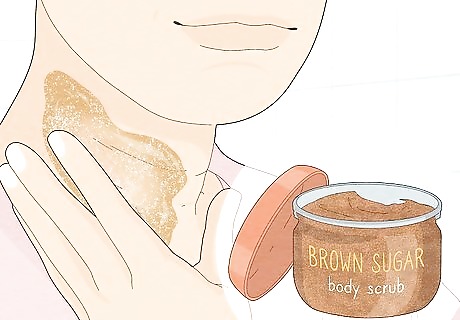
Exfoliate your neck 1-2 times a week. Use a facial cleansing brush or exfoliating scrub to gently remove old skin cells so the skin looks smooth and fresh. Avoid exfoliating too often since this can irritate your skin. Alternatively, use a glycolic acid cleanser on your neck twice a week. Regular exfoliation can also help your skin absorb topical skin care products that target neck lines. If you have sensitive skin, only exfoliate once a week.
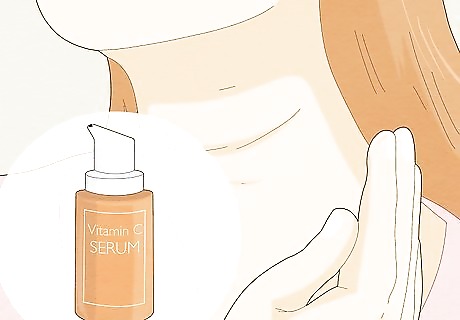
Apply a vitamin C serum in the morning to stimulate cell turnover. Antioxidants that boost skin cell renewal, like vitamin C, can minimize existing lines and improve your skin’s texture. Apply the serum to your neck in the morning after you wash your face and before applying sunscreen for the most benefits. Consider a serum with L-ascorbic acid, which is a form of vitamin C that your skin can easily absorb. Pairing vitamin C serum with an SPF moisturizer doubles the sunscreen’s protective rating. For even more protection and benefits, combine vitamin C with topical ingredients like ferulic acid and vitamin E.
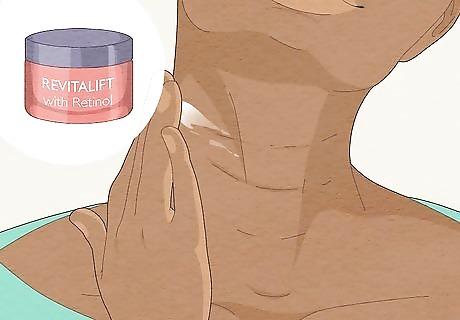
Use a retinol cream at night to increase collagen production. Find a retinol cream formulated for the face, neck, and chest area. Cleanse and dry your neck area, then apply a pea-sized amount of retinol cream to your neck skin. Retinol can be irritating, so use it every other day to start. Then, slowly work your way up to daily application. Retinol makes your skin sensitive to sunlight. Remember to wear SPF 30 every day (whether you're going outside or not) when you're using retinol products. The most effective retinol products contain between 0.5-1% retinol. Retinol increases collagen production so your skin looks fresh and plump, which helps to minimize the appearance of neck lines.
Preventing Neck Lines
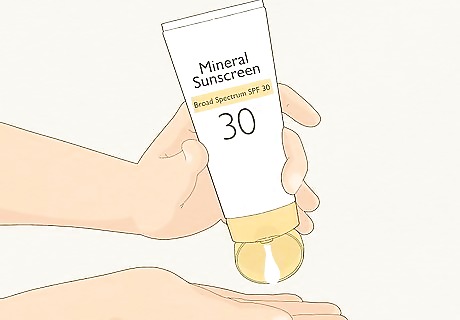
Apply sunscreen to your neck daily to prevent UV damage. Go with a broad-spectrum sunscreen with SPF 30 or higher. Use a dollop of sunscreen the size of a large grape to cover your face, neck, and ears. Put on sunscreen on your neck every morning whether you plan to go outside or not. According to dermatologists, the best preventative measure for avoiding neck lines is sunscreen.

Keep your chin lifted and sit up straight in your chair. Good posture can go a long way toward preventing neck lines. Elevate your tech devices to keep your chin lifted as you’re using them, and get up to move around every 15-30 minutes to get your blood circulating.
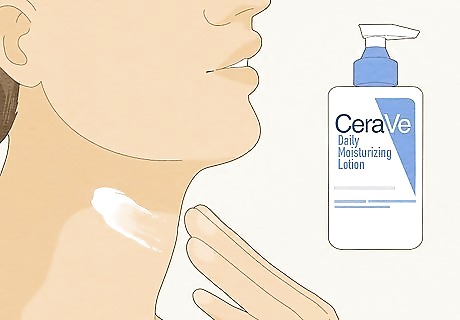
Moisturize your neck twice a day to keep your skin supple. Apply moisturizer immediately after cleansing in the morning and the evening. Look for hydrating ingredients like hyaluronic acid and peptides, as well as antioxidants like vitamins C and E, for the best results. You don’t have to buy a special cream just for your neck! You can use a good face cream.
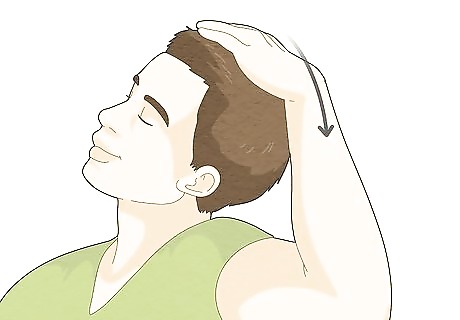
Try neck exercises to strengthen neck muscles and prevent stiffness. Stronger neck muscles may help to tighten loose neck skin, so performing simple exercises every day can be helpful. Exercises can also help any pain or stiffness you’re experiencing due to tech neck. Turn your head to the right with your chin pointed toward your shoulder. Hold the position for 2-3 seconds. Then, turn to the left and repeat the exercise. Repeat the stretch 10 times in each direction, aiming for 2 sets a day. Tilt your head to one side so you're moving your ear toward your shoulder. Hold the position for 15-30 seconds. Relax and return to the starting position, then repeat the stretch by tilting your head to the other side.
Cosmetic Procedures
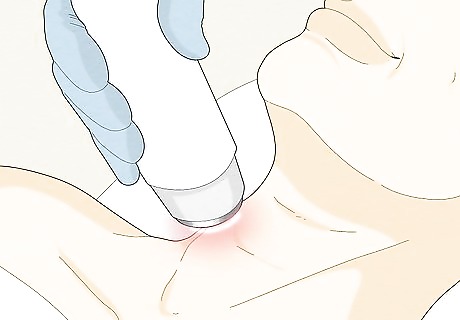
Try a laser resurfacing treatment to stimulate collagen production. Boosting collagen production can plump up your skin, reduce the appearance of wrinkles, and strengthen the foundation of your skin. There are a few laser treatment options available, so consult a licensed dermatologist to figure out which is best for you. A doctor can also recommend how many treatments you might need and how far to space them out for optimal healing. Typically, you’ll need 2-3 treatments about a month apart to see the best results. Laser treatments are relatively quick outpatient procedures. Some require little to no downtime, but it depends on the laser type used. The cost of laser treatments depends on the type you get, but the typical price range is $1,200 to $3,500.

Book a chemical peel to deeply exfoliate the top layer of skin. Your dermatologist will apply a chemical solution to your neck area to penetrate the skin. In the following weeks, your skin will peel, revealing fresh skin with improved texture underneath. There are different depths for chemical peels; discuss the options with a dermatologist to figure out the best depth for you. Redness may last for several weeks after a chemical peel. Light chemical peels usually cost about $150. The stronger the chemical peel, the pricier it gets. Medium-depth peels are usually $500-$600, while a deep peel could cost up to $3,000.
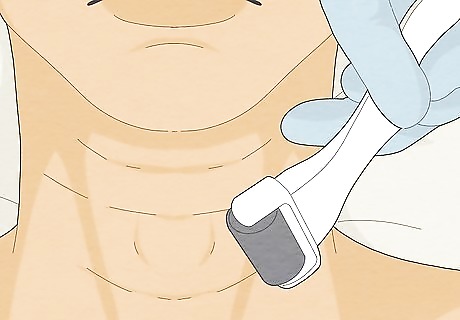
See a dermatologist for microneedling sessions. Your doctor will use a fine-needle roller or pen device to create tiny holes in the top layer of the skin. As the skin heals, collagen production will increase and your skin’s texture will improve. There are different needle sizes, so work with your dermatologist to select the best size for you. Your doctor will apply a topical numbing agent before the procedure so the needles won’t hurt. You may experience minor pain and redness for a few days afterward, but you likely won’t need any down time. The average cost of a microneedling session is $350.
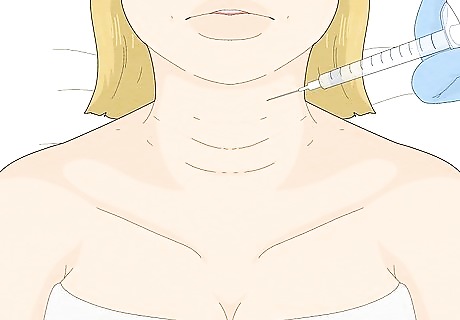
Get Botox injections from a licensed clinician or dermatologist. Botox temporarily freezes your neck muscles, which forces them to relax. This can help treat existing lines and prevent lines from forming. The injections are minimally invasive and well-tolerated, but Botox wears off in 4-6 months. You’ll need regular injections to maintain results. Botox should only be injected in-office under the supervision of a doctor. Botox treatment for the neck area usually costs $300-500.
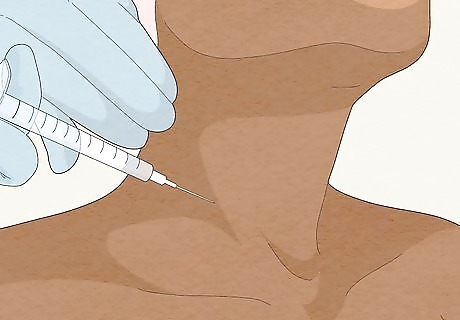
Try filler injections to smooth out your skin. A licensed clinician or dermatologist will inject hyaluronic acid filler directly into the horizontal lines on your neck to minimize their appearance. The procedure takes about 10 minutes and may cause some short-term swelling and bruising, but both are minimal and well-tolerated. Filler lasts about a year, so you’ll need to get the injections regularly to maintain results. Make sure your doctor evaluates you before injecting fillers to make sure you’re a good candidate. Filler treatment for the neck area typically costs $500-$1,000.
















Comments
0 comment